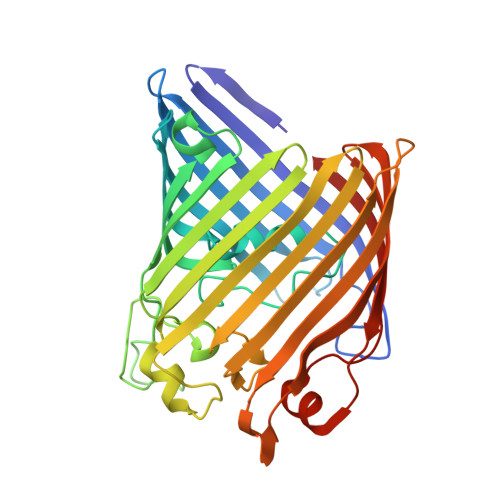Altered Antibiotic Transport in Ompc Mutants Isolated from a Series of Clinical Strains of Multi-Drug Resistant E. Coli.
Lou, H., Chen, M., Black, S.S., Bushell, S.R., Ceccarelli, M., Mach, T., Beis, K., Low, A.S., Bamford, V.A., Booth, I.R., Bayley, H., Naismith, J.H.(2011) PLoS One 6: 25825
- PubMed: 22053181
- DOI: https://doi.org/10.1371/journal.pone.0025825
- Primary Citation of Related Structures:
2XE1, 2XE2, 2XE3, 2XE5, 2XG6 - PubMed Abstract:
Antibiotic-resistant bacteria, particularly gram negative species, present significant health care challenges. The permeation of antibiotics through the outer membrane is largely effected by the porin superfamily, changes in which contribute to antibiotic resistance. A series of antibiotic resistant E. coli isolates were obtained from a patient during serial treatment with various antibiotics. The sequence of OmpC changed at three positions during treatment giving rise to a total of four OmpC variants (denoted OmpC20, OmpC26, OmpC28 and OmpC33, in which OmpC20 was derived from the first clinical isolate). We demonstrate that expression of the OmpC K12 porin in the clinical isolates lowers the MIC, consistent with modified porin function contributing to drug resistance. By a range of assays we have established that the three mutations that occur between OmpC20 and OmpC33 modify transport of both small molecules and antibiotics across the outer membrane. This results in the modulation of resistance to antibiotics, particularly cefotaxime. Small ion unitary conductance measurements of the isolated porins do not show significant differences between isolates. Thus, resistance does not appear to arise from major changes in pore size. Crystal structures of all four OmpC clinical mutants and molecular dynamics simulations also show that the pore size is essentially unchanged. Molecular dynamics simulations suggest that perturbation of the transverse electrostatic field at the constriction zone reduces cefotaxime passage through the pore, consistent with laboratory and clinical data. This subtle modification of the transverse electric field is a very different source of resistance than occlusion of the pore or wholesale destruction of the transverse field and points to a new mechanism by which porins may modulate antibiotic passage through the outer membrane.
Organizational Affiliation:
Centre for Biomolecular Sciences, University of St Andrews, St Andrews, United Kingdom.
















